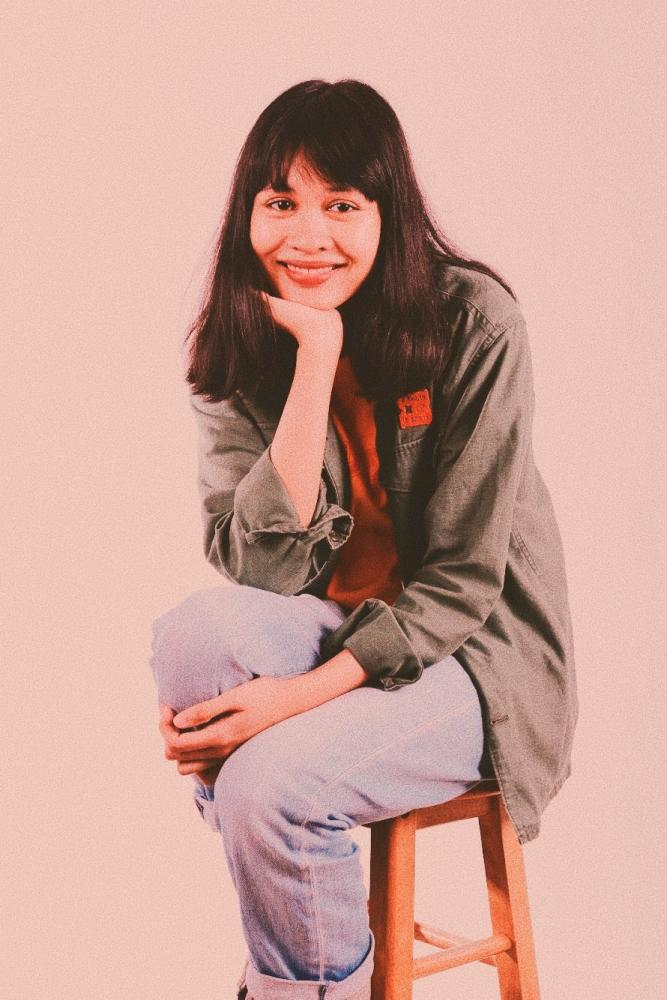Pablo Picasso once said: “Good artists copy, great artists steal”. Whether you choose to believe it or not, local artist Nurul Atika’s whimsical illustrations in bright and vibrant colours say so otherwise.
During her early years, the 23-year-old illustrator discovered that her knack for art began with replicating and imitating sketches drawn by her friend. At that time, she would copy any style without having a specific direction to make her stand out.
Later, she began to realise how she was merely experimenting, without the stress of finding her own signature art style. To her, it was a journey of self-discovery, for her to figure out what she likes best.
Fast-forward a few years later, and Nurul’s illustrations have become more prominent than ever, and her colourful illustrations filled with vim and vigour are memorable and instantly recognisable.
Share with us how you became an illustrator.
“I started taking art classes in high school which eventually led me to pursue fine art in university, but halfway through I decided to change my major to graphic design.
“I see myself more as an illustrator rather than an artist who owns a studio and exhibits their work in galleries. I don’t really share the particular qualities or values of an artist. I want to illustrate comics, posters or anything like that.”
Can you remember some of your earliest influences?
“I was very intrigued by my friend in high school. She is one of the most talented and successful illustrators I know, and we’re still good friends. Back then, she would sketch or draw during class or during recess, and that really sparked my interest in art.
“I started off copying her illustrations and mimicking everything she did, then later slowly [developed] my own style while moving on to bigger influences after being exposed to work by other international artists like James Jean and American comics with lots of interesting character design and storylines.”
Your art often consists of people as inspiration and as a theme. How do you translate one’s personality and characteristic into illustrations?
“I really love character designs, human forms and figures. I’m so drawn to people and the tiniest details they have on them, like the statement accessories and clothes they wear – even the hairstyles add to the character in my illustrations.
“No two people are alike and every one of us has quirks and a personality that set us apart. So when I translate all these individual qualities into illustrations, I find it really exciting to have observed what one possesses, and the other people don’t.
“If someone commissioned me to make a portrait, I’ll ask some additional questions about the person so that I could portray them in the illustration [in a way] to make it more personal and unique. Instead of creating more of ourselves, why not channel the inspiration and individualism of people around us that we don’t necessarily have [ourselves]?”
Have you ever experienced a creative burnout?
“I think all creative people, be it an artist or a writer, have experienced creative burnout. Whenever I feel burnt out, I always take a step back and rest, just really take it slow, instead of rushing the whole creative process.
“Often times, we are affected by peer pressure, expectations and our insecurities, which leads to self-doubt; we like to compare ourselves to [fellow] artists, and that puts us down, thinking our work isn’t as good as these artists we admire.
“Other artists may create more work in a short amount of time, but when you try to follow the same process, [it] might not work for you. You have to work at your own pace and really take pride in your work. Doing art is not supposed to make you feel forced, it’s supposed to be a lively process.”
What criteria do you use to critique your work?
“There isn’t really any criteria but I have the tendency of adding too many elements and details when I’m supposed to just keep it simple. I always have a gut feeling that there’s something missing, but the thing is, I don’t even know what is missing.
“I find it dull and boring when my illustration lacks details, hence, that explains why I like to add more details to it. Maybe I have a certain degree of OCD.”
What do you think every artist should do?
“Every artist should honour themselves and believe in the creative process of developing their own art.
“Like in my illustrations, you can see how everyone has their own quirks, so every artists’ art style is different.
“Don’t beat yourself up trying to meet expectations, because that would just sabotage yourself, and you don’t want that.”













